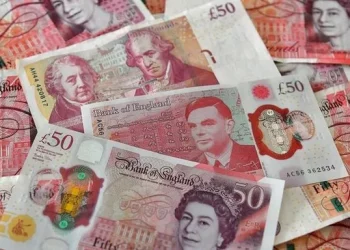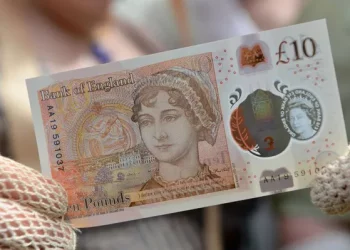Part of the reason it feels hard to get in is that there are so many technical terms, each of which can be related to money.
Therefore, before you can make money, you must master the common terminology.
Otherwise, you may lose your way on the Internet before you make any money.
The following are the most commonly used foreign exchange terms: Foreign exchange: refers to foreign countries, including banknotes, coins, etc.;
Foreign currency securities, including government bonds, Treasury bills, corporate bonds, stocks, coupons, etc.
Foreign exchange is some kind of foreign currency or foreign currency asset, but not all non-domestic currencies are foreign exchange, only those foreign currencies that are convertible can be called foreign exchange.
Eight of the major and minor currency: is the most commonly used currency (USD/EUR/JPY/GBP/CHF/CAD/AUD/NZD $) New Zealand as the major currencies, such as this is the most liquid and the most commonly used.
All other currencies are called minor currencies.
Currency pairs: Foreign exchange markets must be traded in currency pairs. The value of one currency is always measured against another.
A group of currency pairs in which the former currency is (the benchmark currency) and the latter currency is the denomination currency (the relative currency).
For example, euro /USD (EUR/USD), sterling /USD (GBP/USD), we often omit the term currency pair in actual communication, but it is the object of foreign exchange transactions.
Common currency pairs:
Euro /USD (EUR/USD), USD/JPY (USD/JPY), British Pound /USD (GBP/USD), Australian Dollar /USD (AUD/USD), USD/CHF, USD/ (USD/CAD), NZD/USD
, Euro/Swiss Franc (EUR/CHF), Euro/Canadian Dollar (EUR/CAD), Euro/Australian Dollar (EUR/AUD), Euro/British Pound (EUR/GBP).
(also called foreign exchange, or foreign exchange market) refers to the exchange rate between two currencies. It can also be regarded as the value of one currency against another.
For example, if the euro/dollar is 1.1178, the exchange rate of the euro against the dollar is 1.1178, that is, one euro can be exchanged for $1.1178.
When the euro/dollar becomes 1.1180, it means that one euro is now worth 1.1180 dollars.
Trading: namely we often say that foreign exchange trading, or roast foreign exchange refers to sign a contract with the (investment) designated bank, open trust investment account, deposit a sum of money (deposit) as collateral, and the (investment) (or broker) bank credit operation limit (namely the leverage effect of 20-400 times, 400 times more than for illegal).
Brokers: foreign exchange Brokers (Brokers) in foreign exchange markets only plays the role of the agent (Intermediaries), is a commission for the purpose, for customers to contact agreed, belong to between the buyer and seller, woo set, through the approach of, directly or indirectly from the bank.
Since foreign exchange trading is not yet open on the mainland, the way most people participate is through foreign brokers.
Direct trade/cross trade: direct trade and cross trade correspond, in the market, the default currency of a trading system (generally US dollar) is exchanged with other currencies is direct trade, so we often say that the trade involving US dollar is direct trade, and nothing to do with US dollar is cross trade.
Opening/closing price: The opening price, also known as the opening price, refers to the first trading price of a currency after the opening of each trading day;
The closing price refers to the final trading price of a currency before the end of a day’s trading activities. The “closing price” is the benchmark of the market for the day and the basis for the opening price of the next trading day, which can be used to predict the future market price.
Buy (sell) price: Both from the point of view of the dealing bank and for the base currency in the quote.
Bid rate is the rate at which banks buy foreign currency (the currency listed to the left of “/” in the list price, that is, base money) from customers.
Offer Rate is the rate at which banks sell foreign exchange (the currency listed to the left of “/” in the price list, that is, the base currency).
So, for us, the bid price is the bank’s ask price.
For example, the euro /US dollar (EUR/USD) is quoted at 1.1178/1.1180.
, the one on the left is the price to sell euros, and the one on the right is the price to buy euros, generally against the base currency.
Hand: Lot is a unit of transaction quantity in foreign exchange transactions. In foreign exchange transactions, a hand represents 100,000 yuan of base money.
There are also mini, micro and nano hands.
Their sizes are 10,000, 1,000, and 100 base money.
For example, buying 0.01 lots of dollars means buying $1,000.
Contract unit: refers to the amount traded in a foreign exchange contract.
The unit of contract for 1 lot of foreign exchange is 100 thousand base currency.
For example, a lot of euro/dollar is contracted in 100,000 euros, and a lot of pound/yen is contracted in 100,000 pounds.
Point: In order to accurately express the exchange rate, it is usually expressed with five digits. The unit with the smallest change is the point.
For example, the quotation is 0.0003, the unit of minimum change is 0.0001, 0.0001 means 1 point, so 0.0003 is 3 points;
Similarly, 120.01 is 12001 points, which is the smallest unit of exchange rate change.
For most foreign exchange varieties such as euro/US dollar, pound/US dollar, the minimum change unit is 0.0001, but for some foreign exchange currency pairs such as US dollar/Japanese yen, the minimum change unit is 0.01, but the amount of change of a point is the same, 10 US dollars for each hand.
: : The difference between the bid price and the ask price. Under normal circumstances, the smaller the point spread, the higher the liquidity.
For example, the euro/dollar is quoted at 1.1178/1.1180, with a point spread of 0.0002, or 2 points.
In other words, when the exchange rate changes, the difference in point fluctuations is also “point spread”.
Leverage: Determines the amount of margin to be paid.
If 100:1 leverage is chosen, only 1/100 of the transaction amount is used as margin.
Alternative leverage ratios typically range from 20 to 400 times.
Close out: Close a trade by selling a buy order at the current level and buying a sell order at the current level.
Burst position: Due to the rapid changes in the market, when investors do not have time to increase the margin, the margin in the account is not enough to maintain the original contract.
This kind of margin insufficient forced liquidation margin caused by “zero”, commonly known as “burst”.
As a comprehensive example, suppose that the standard contract in the foreign exchange market is $100,000 per lot, the value at this point is 100,000 *0.0001= $10.
Suppose the account has $5000 and the transaction is in EUR/USD:
When the investor chooses 100x leverage, the capital tied up in the guarantee fund is $1000 ($100,000 /100), and when the market moves and loses 400 points ($4000 $10), the account has $4000 capital remaining, and the margin call system forces the liquidation of the position.
(can withstand 400 points of risk).
Stop LOSS/GAIN: A STOP LOSS IS WHEN AN investment LOSES A predetermined amount AND CLOSES OUT a position in time to avoid further losses.
Stop profit refers to good close, when the profit reaches the predetermined amount, timely liquidation out.
Slip point: the difference between the customer’s order price and the actual transaction price.
Foreign exchange market prices can change every millisecond, and there is often a “slip point” phenomenon that causes the actual trading price to be greater or less than the order displayed price.
At this point, you may have additional losses or gains.
Non-farm: Abbreviation for US non-farm data.
It refers to the non-farm employment, employment rate and unemployment rate of the United States, reflecting the employment situation of the non-farm population of the United States.
The first Friday of each month is the release date of “US non-farm data”, which will greatly affect the value of the dollar, higher than expected, favorable to the dollar, lower than expected, unfavorable to the dollar.
Technicals/Fundamentals: We often talk about technicals as using mathematical formulas and graphs to analyze the relationship between trading time, volume and price;
Fundamentals are a comprehensive analysis of economic and political data with an eye to future trends, but not necessarily to exact market prices.
K-chart/candlelight chart: A K-line contains four pieces of information: the opening price, the closing price, the day’s high and the day’s low.
The K line chart has several components: the upper shadow line, the lower shadow line and the middle solid part.
The middle rectangle is called the solid, the thin line above the solid is called the upper shadow line, the lower part is called the lower shadow line, the highest point of the upper shadow line is the highest price, the lowest point of the lower shadow line is the lowest price.
The entity is divided into Yang line and Yin line. When the closing price is higher than the opening price, the entity part is generally painted red or blank, which is called “Yang line”.
When the closing price is lower than the opening price, the physical part is usually painted green or black, called the “Yin line”.
Investors still focus on Omicron, two factors may guide the market theme.
Please pay attention to the specific operation, the market is changing rapidly, investment needs to be cautious, the operation strategy is for reference only.

























